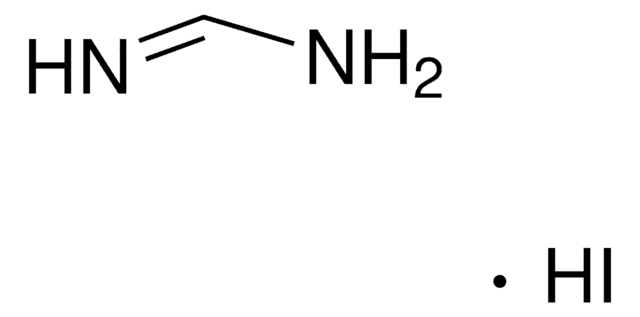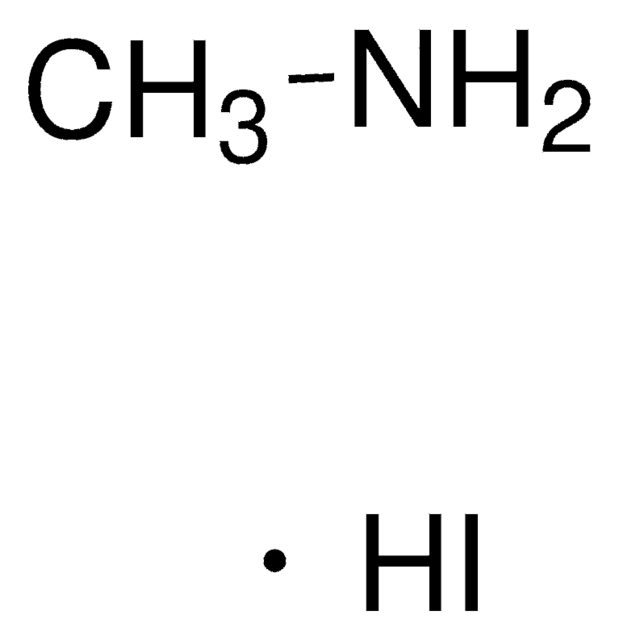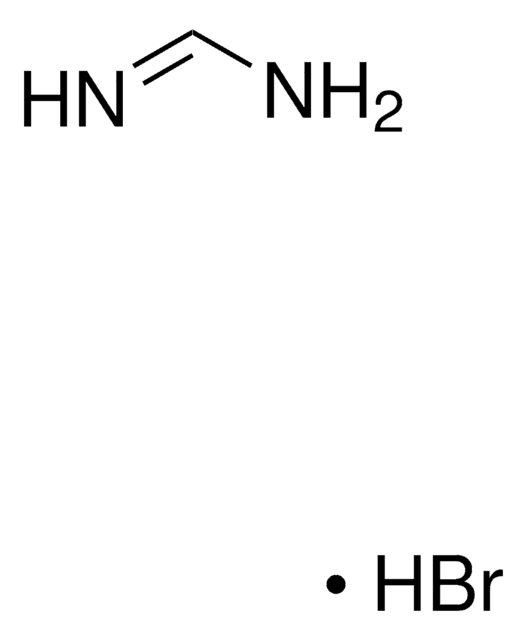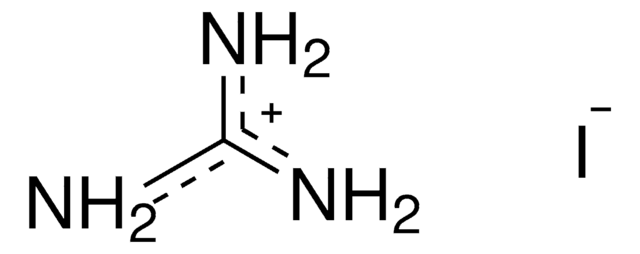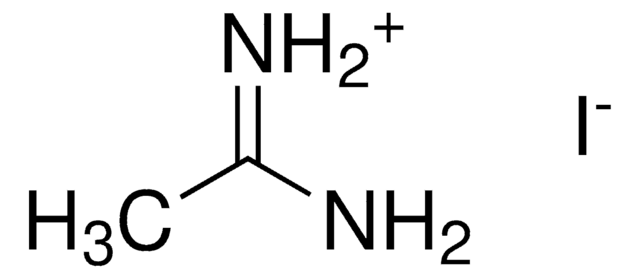806048
Formamidinium iodide
Synonyme(s) :
Greatcell Solar®, Iminomethylamine hydriodide, Methanimidamide iodide
About This Item
Produits recommandés
Description
Elemental Analysis: C ~7.0%
Elemental Analysis: N ~16.3%
Niveau de qualité
Essai
≥98% (H-NMR)
Forme
powder
Caractéristiques du produit alternatif plus écologique
Design for Energy Efficiency
Learn more about the Principles of Green Chemistry.
sustainability
Greener Alternative Product
Pf
335 °C
Autre catégorie plus écologique
, Enabling
Chaîne SMILES
[NH2+]=C([H])N.[I-]
InChI
1S/CH4N2.HI/c2-1-3;/h1H,(H3,2,3);1H
Clé InChI
QHJPGANWSLEMTI-UHFFFAOYSA-N
Catégories apparentées
Description générale
Application
Informations légales
Greatcell Solar® is a registered trademark of Greatcell Solar Materials Pty Ltd
Code de la classe de stockage
11 - Combustible Solids
Classe de danger pour l'eau (WGK)
WGK 3
Point d'éclair (°F)
Not applicable
Point d'éclair (°C)
Not applicable
Faites votre choix parmi les versions les plus récentes :
Déjà en possession de ce produit ?
Retrouvez la documentation relative aux produits que vous avez récemment achetés dans la Bibliothèque de documents.
Les clients ont également consulté
Articles
Next generation solar cells have the potential to achieve conversion efficiencies beyond the Shockley-Queisser (S-Q) limit while also significantly lowering production costs.
For several decades, the need for an environmentally sustainable and commercially viable source of energy has driven extensive research aimed at achieving high efficiency power generation systems that can be manufactured at low cost.
Global Trade Item Number
| Référence | GTIN |
|---|---|
| 806048-25G | 4061832980409 |
| 806048-5G | 4061833333112 |
Notre équipe de scientifiques dispose d'une expérience dans tous les secteurs de la recherche, notamment en sciences de la vie, science des matériaux, synthèse chimique, chromatographie, analyse et dans de nombreux autres domaines..
Contacter notre Service technique
